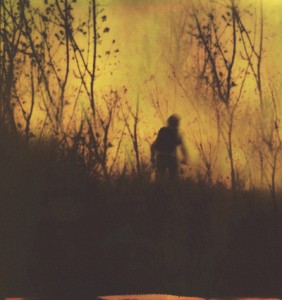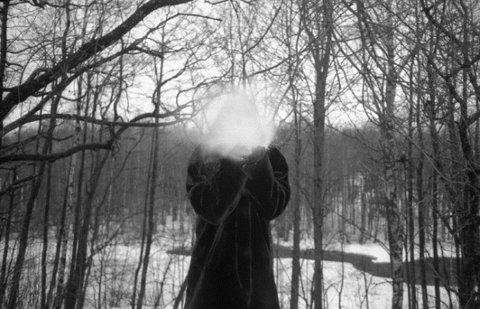Within 50 years of the Buddha’s death, there were 18-25 schools of Buddhism, all offering different emphases, explanations, practices.
What is the keynote of Mahayana Buddhism? We do not wake up alone, we wake up with others. We put aside individual striving and enlightenment until every cat, dog, leaf, blade of grass and person is enlightened. Oh no please, after you. What you do on your cushion affects everyone else. The way you walk into a room affects everyone else, often in ways that you can’t see. We’re all in this together.
The Lotus Sutra is written in an imaginative language that invites you to look at your life in a different way. The point is to look at your life. If you want to read it to get something out of it, for listings of dos and don’t for instance, the enumerations of qualities, the mapping of the known and unknown worlds, then you’ll be frustrated. But if you can listen with your heart and imagination rather than trying to figure it out, then it can benefit.
Mahayana Buddhism
Maha: great
Yana: vehicle
A small vehicle can only carry one person. A great vehicle can carry many. If you’re portaging, or walking in a rainforest, you have to walk along the path single file, one at a time. But if there is a road built, the path is widened, one day there might be lanes for traffic – and these lanes are like the schools of Buddhism. They offer a clearly delineated path, and you can tell right away when you’re on the shoulder of the road. If you get lost there are people who can offer directions back to the main roads. On Canadian highways there is a diamond lane reserved for cars that are carrying more than two passengers. Mahayana Buddhism is the diamond lane – we do it together, we bring others along, and they help us wake up.
Upaya
The word upaya or expedient means appears in this chapter for the first time in Buddhist literature. Early Buddhism focused on ethics and sitting practice, the question of right action was refined to questions of intention. When you take an action you can’t control the result – every parent knows this only too well. Karma, in Buddhism’s earliest iteration, is mostly related to intention because this is what we can control in our actions.
For Mahayana Buddhists intentions are not enough, our practice needs to be enacted and embodied in the world. Our practice is something that happens between people, in relation. What is true in one situation is not going to be true in another, our practice is motivated by the difference it can make for others. Is it helping? It is a flexible and flowing verb that occurs in the space between you and I.
Chapter 2
As Chapter 2 begins the Buddha is in samadhi or deep concentration. He is showing samadhi, his conduct is a demonstration. What does it look like? It is a light that lights up 18,000 worlds and every corner of the universe. It’s so bright that everyone can read each other’s minds. As you practice, your mind becomes clearer and you can see the quality of other minds and hearts. As you get a sense of your own mind and heart you can gain a sense of others.
At last the Buddha turns to Shariputra who is the butt of a lot of Buddhist jokes. He has mastered all the sutras, he’s cleverness itself, he understands, but he doesn’t get it. He knows but he doesn’t know. He has mastered the sutras intellectually but has not awakened. Shariputra asks him, “Will you teach the Lotus Sutra?” The Buddha replies, “No, because the people who have come here to listen have a firm belief that they know the teaching already. This knowing is a shadow cast onto present experience, a kind of arrogance, so I won’t teach it.” But Shariputra asks three times, and then the Buddha relents and says, “OK, I’ll teach it.” Just as he ‘s about to start teaching 5,000 monks stand up and leave. The Buddha finds this a relief.
There are different ways of teaching – the Buddha says he‘s going to use upaya or expedient means. There are also teachings which involve sutras – the stitching together of texts. Or a recounting of jatakas (past lives), or miracles, or parables, upadesa (dialogue). (In Hindu there are other forms of teaching, like the gitas (songs). There are different ways to teach because there are different kinds of people. Different people understand differently. But if there is arrogance, then no kind of teaching will work. Similarly, when you are serving others, you need to find a form that works for them that will be effective. Different forms for different needs. The core of skillful practice is making sure your actions make a difference. There’s no need to offer service to others that won’t help.
What happens in the world is not separate from us, but depends on us, is connected to us, not outside us. And of course there are many worlds. Our idea of the world is not the world either. Whatever we expect to happen in the world isn’t the real world. And yet, here we are. This is it. Enlightenment Day, 2002 and You are there. It does not depend on our ideas about it, and yet, it could not exist at all if any one of you weren’t right here, now. Then it would not be what it is. Taigen Dan Leighton, Mt. Source Sangha, Bolinas December 12, 2002
After the tsunami that swept Japan, many bloggers offered explanations for what happened (God’s vengeance, etc etc). But people in Japan don’t need explanations, they need blankets and food and places to sleep. This is skillful means.
How to find a balance between form and access to form?
The Buddha is protean, a shape shifter, always assuming the form of whatever culture it arrives in. What does the Buddha look like in Canada? What does the Buddha look like in your life?
Upaya (skillful means) is not just offering words, it also means being silent and knowing when to be still. Silence is not silence. Sometimes it’s best to wait until the other person has said everything, right down to the end of their exhale, there’s still more to come out, just wait with them, hold them with your silence, so they can find the reach to get to the bottom. But staying silent when it’s important to say something is not being skillful. There are so many kinds of silence.
Robert Bringhurst says silence is like a bell ringing. Silence has an edge. You only know there’s silence because there’s sound. You can only read typed letters and words because there’s a white background. Action doesn’t mean simply doing something, it’s also knowing how to be still. Don’t just do something, stand there!
Buddha: Shariputra, when the age is impure and the times are chaotic, then the defilements of living beings are grave, they are greedy and jealous and put down roots that are not good. Because of this, the Buddhas, utilizing the power of expedient means, apply distinctions to the one Buddha vehicle and preach as though it were three.
The Lotus Sutra reimagines the work of the Buddha as a kind of rhetorical foreplay, a necessary interlude. All he ever wanted to do was to teach the Lotus Sutra and tell people what it means to be awake, only people weren’t ready to hear what he really wanted to say. So he had to teach what is now known as the Pali Canon, the many sutras which offer detailed instruction about sitting practice, or dos and don’ts for the monks and nuns in his sangha, or for householders. This was all a round about way of getting people through the door. That’s why he introduced the teaching of nirvana, as a skillful means, as a way to produce arhats, fully enlightened beings. He split the core of the teaching in order to produce the idea of nirvana (cooling or extinguishing), simply in order to get you through the door. This is the beginning of the idea that nirvana is samsara (continuous flowing).
I want to talk today about enlightenment. Usually in my tradition, in Suzuki Roshi’s lineage, we don’t talk so much about enlightenment, because it’s kind of a dangerous word. You might imagine that there is such a thing as enlightenment. But enlightenment is not a thing, but perhaps rather a verb. Dogen says in Genjokoan that deluded people have delusions about enlightenment. So having heard this word you probably all have such delusions. This is very natural that we would have delusions about some wonderful realm of enlightenment that exists someplace else. We hear this word enlightenment and think there’s something we need to get, that we need to get higher, or that we need to be somebody other than who we are. And when you realize you are thinking that, this is actually an enlightened thought, because enlightened people are enlightened about their delusions, as Dogen says. So when you are sitting and aware of your restlessness, or fidgeting, or sleepiness, or wanting to be somebody or someplace else than where you are on your cushion, that is this basic delusion, and that is what we need to be enlightened about. We practice by seeing the ways in which we think we are not where enlightenment is. Taigen Dan Leighton, Mt. Source Sangha, Bolinas – December 12, 2002
Early in his teaching career, the Buddha said there should be no statues, or idols or monuments. The earliest Buddhist temples had no representations in them, only geometric figures, and this tradition lasted for hundreds of years. But the Lotus Sutra has the Buddha saying:
After the Buddhas have passed into extinction,
if persons make offerings to the relics,
raising ten thousand or a millions kinds of towers,
using gold, silver and crystal,
seashell and agate,
canelian, lais lauzili, pearls
to purify and adorn them extensively,
in this way erecting towers;
or if they raise up stone mortuary temples
or those of sandalwood or aloes,
hovenia or other kinds of timber,
or of brick, tile, clay or earth;
if in the midst of the broad fields
they pile up earth to make a mortuary temple for the Buddhas,
or even if little boys at play
should collect sand to make a Buddha tower,
then persons such as these
have all attained the Buddha way.
If there are persons who for the sake of the Buddha
fashion and set up images,
carving them with many distinguishing characteristics,
then all have attained the Buddha way.
or if they make things out of the seven kinds of gems,
of copper, red or white cooper,
pewter, lead, tin,
iron, wood, or clay,
or use cloth soaked in lacquer or resin
to adorn and fashion Buddha images,
then persons such as these
have all attained the Buddha way.
If they employ pigments to paint Buddha images,
endowing them with the characteristics of hundredfold merit,
if they make them themselves or have others make them,
then all have attained the Buddha way.
Even if little boys in play
should use a piece of grass or wood or a brush,
or perhaps a fingernail
to draw an image of the Buddha,
such persons as these
bit by bit will pile up merit
and will become fully endowed with a mind of
great compassion’
They all have attained the Buddha way.
What does this fantastical column of words mean? It means you need faith. The Lotus Sutra offers no theology, there is no God, no afterlife consolations, no divine principle inhabiting everything, no parental substitute to comfortably infantilize the believer. The core of the practice is to have faith and devotion, and to use that faith to become a bodhisattva, to organize your life so that you can serve others.
The Buddha says that the reason people don’t understand what he’s saying is that in order to understand you need a Buddha and a Buddha. The information doesn’t come across if we relate to each other as one person to another. Can you recognize the Buddha in others? Can you talk to them from that place, to that place?
Dogen: Buddha dharma cannot be known by a person. For this reason, since olden times no ordinary person has realised Buddha dharma. No practitioner of the lesser vehicles has mastered Buddha dharma. Because it is realised by Buddha s alone, it is said only a Buddha and a Buddha can completely master it. When you realise Buddha dharma, you do not think “This is a realisation just as I expected”. Even if you think so, realisation always differs from your expectation. Realisation is not like your conception of it. Accordingly, realisation cannot take place as previously conceived. When you realise Buddha dharma, you do not consider how realisation came about. You should reflect on this. What you think, one way or another, before realisation is not a help for realisation. Although realisation is not like any of the thoughts preceding it, this is not because such thoughts were actually bad and could not be realisation. Past thoughts in themselves were already realisation. But since you were seeking elsewhere, you thought and said that thoughts cannot be realisation. However, it is worth noticing that what you think one way or another is not a help for realisation. Then you are cautious not to be small-minded. If realisation came forth by the power of your prior thoughts, it would not be trustworthy. Realisation does not depend on thoughts, but comes forth far beyond them. Realisation is helped only by the power of realisation itself. Know that then there is no delusion and there is no realisation.
The Lotus Sutra is trying to get you out of any idea of stages or links. Realization can’t take place as previously conceived. What you think before realization is never helpful for realization. Everything you think of arises and gets in the way, but the gate is right here. Maybe you’re trying to master your mind to have clarity, silence, realizations? But all those thoughts were the gates to realization. Language is silence speaking, it is also realization, or at least, it can be. Language isn’t something to get over, unless you use language the way a person uses language, and then you’ll miss it. But if you use language the way a Buddha uses language then the dharma fills your mouth whenever you speak.
We learn to speak because we love our mother. The impulse to learn language so fast is the dharma between a Buddha and a Buddha. But as we get older we keep throwing a shadow across her face, we keep thinking, “That’s my mother.” We carry a story of her into this moment, we steal the present from her, from this place between her and me. We turn this person into a reliable thing. There is a stage with every meditator where language becomes the enemy and then you don’t get along with your mother.
You can wake up to the way things are if you don’t own anything. That doesn’t mean owning nothing, it means owning no-thing. No me and mine. When you’re a Buddha and someone dies you cry, crying happens to you, but crying also flows through you. It’s every human tear that you cry, but it’s also your tear, because a human string has been cut. You feel the loss, all the way down in your root chakra, the mula bhanda. No ice cream jags or HBO telethons, you sit inside your feelings, and these are also the feelings that anyone would have. Only you could cry these tears, but they don’t belong to you, they belong to everyone, the ocean of tears we are all swimming in. Actually the original word in Sanskrit, bodhi, just means awakening. It just means to wake up. And Buddha is the “one who has awakened.” But then when we hear that, we might think that there is a state called awakening, as opposed to some state called sleeping, or dreaming, or confusion. So if you’re sleeping or dreaming, please be completely awakened about your sleeping and dreaming. In his essay “Within the Dream Express the Dream,” Dogen clarifies that Buddhas and Ancestors awaken in a dream. And all of Buddha’s wonderful talks are merely talks in a dream. So please enjoy the dream that you are in. Please be present in your dream. Study your dream carefully.
Sometimes we may even find ourselves in the same dream for a little while. I don’t know if that is my dream or your dream, or Buddha’s dream. But whether we think it’s the same dream or a different dream, please just enjoy, and be completely present in this dream.
This is a tricky business, because this realm of awakening, this realm of completion and wholeness, this realm of enlightenment, is not something we can know. And yet, we are all mostly more or less middle-class American folks here. We like to know things. So you should know that you have a hang-up about wanting to know things. Study that too. Taigen Dan Leighton, Mt. Source Sangha, Bolinas – December 12, 2002





